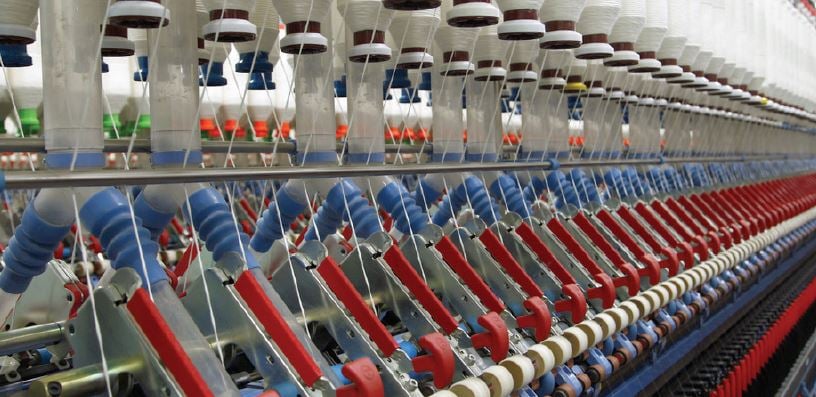Trending in U.S. Manufacturing: Reshoring
For at least two decades—up until just a couple of years ago—the U.S. had been losing some 140,000 manufacturing jobs to the offshoring of production operations by U.S. manufacturers. Low labor costs in Asia made it not only attractive to send manufacturing operations there, but a necessity for many manufacturers working to remain competitive in the global marketplace.

But a trend is taking place now that once seemed improbable as more and more U.S. manufacturers are considering or are bringing manufacturing operations back to the states, or they are keeping operations here despite low labor costs overseas.

According to Harry Moser, founder of the Reshoring Initiative, about 240,000 manufacturing jobs have been brought to the U.S. from offshore over the last six years.
“Back in 2003, the U.S. was losing to offshoring around 150,000 manufacturing jobs a year, and we were bringing back through foreign direct investment and reshoring around 10,000, so we were losing net 140,000,” said Moser. “By 2014—and again in 2015—there was zero net loss, and possibly a net gain. So, while reshoring fell off some in 2015 from 2014, foreign direct investment was very strong. We’ve gone from losing 140,000 manufacturing jobs a year to losing zero a year. That’s a huge difference.”
The Boston Consulting Group (BCG) conducts an annual survey of senior-level, U.S.-based manufacturing executives at companies with at least $1 billion in annual revenues. In its latest poll released in December, 31 percent of respondents said their companies are most likely to add production capacity in the U.S. within five years. Just 20 percent said they are most likely to add capacity in China. Flash back to 2013: only 26 percent said production would be added in the U.S., while 30 percent said China would be the destination for new manufacturing operations. BCG called this finding “striking.”

“There are hundreds of companies that have done it and we know that, according to the Reshoring Institute, there is now more reshoring than there is offshoring,” said Hal Sirkin, senior partner and managing director of BCG who has closely followed reshoring over the last five years.
BCG isn’t the only group providing evidence the reshoring trend is taking hold. In 2015, Medical Design Technology Magazine conducted a poll that showed that 49 percent of the companies surveyed had outsourced or offshored and, of those, 45 percent who had offshored are bringing it back. Plastics News released the results of Nexant survey last May that said about 70 percent of the plastics industry manufacturers have or soon will reshore.
Moser says his organization’s website—www.reshorenow.org—contains a large, searchable database of evidence that reshoring is taking hold, with scores of real-life examples of companies that have or plan to reshore. He says the database is a helpful tool for manufacturers who are considering reshoring to see what other companies have done and how it might best work for them.

The push to reshore is being led and promoted by some of the country’s most recognizable and renowned brands. In 2013, retail giant Walmart announced its intentions to spend $250 billion on goods domestically manufactured over the next decade to help boost the U.S. economy and create jobs. In 2012, Apple, the world’s largest consumer electronics company, announced its plans to move some manufacturing operations back to the states with a new Mac Pro desktop computer plant in Austin, Texas.
What’s behind the reshoring trend?
Moser says advances in manufacturing like automation and robotics have replaced the need for a large number of low-wage workers to perform assembly and other production processes. Does this mean less jobs for U.S. workers when operations return to the states? The answer is yes—there are fewer low-wage, low-skilled jobs created as a result of advanced manufacturing techniques. But the good news is it takes a skilled workforce to operate today’s sophisticated manufacturing equipment, which means manufacturers who reshore are creating more challenging, high-wage jobs at their U.S.-based plants.
“Reshoring means more jobs, fundamentally,” said BCG’s Sirkin. “And it means, in some ways, better, higher-level jobs in robotics and automation. Through the use of these technologies, manufacturers are producing more goods at lower prices, and that’s good for the economy.”
BCG’s 2015 poll provides evidence of this, suggesting that reshoring is still likely to create new U.S. manufacturing jobs despite a clear intent by respondents to invest in automation. By a two-to-one margin, executives said they believe that reshoring will help create U.S. jobs at their companies rather than lead to a net loss of jobs.
Sirkin says its important to do the “correct economics” when considering the prospect of reshoring.
“There are so many things we can miss in the supply chain that are costly, including the time of executives and other things,” he said. “But moving operations from—let’s say China—to the U.S. at this point in time for a lot of manufacturers is a particularly attractive option.”
- Category:
- GrayWay
- Manufacturing
Some opinions expressed in this article may be those of a contributing author and not necessarily Gray.
Related News & Insights
Manufacturing
When Bringing Manufacturing Operations Back to the U.S. is the Right Choice
GrayWay
Manufacturing
The New Face of Manufacturing: Partnership to Bring Manufacturing Back to America
GrayWay
Manufacturing
Made in America: Consumers, Corporations & Innovation Indicate Growth
Industry
August 20, 2013